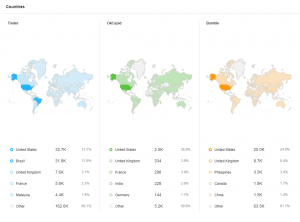Our increasingly tech-connected world has brought about many changes to the workplace, but few seem to be having a greater impact than the rise of the remote workforce. Nearly 40% of the U.S. workforce telecommutes at some point during the average month, and the number of individuals who work 100% from home is rapidly growing as well—especially in the tech and digital service industries.
So why does this matter? Hiring a remote team generally benefits both employer and employee. As an employer, many of your overhead costs are greatly reduced, and your ability to hire top talent is no longer limited by a candidate’s geographic proximity to your office. As a whole, remote workers report that they feel more productive and less stressed while working from home, increasing their overall job satisfaction and happiness.
Despite these benefits, however, some companies experience trouble successfully managing remote teams. There are three key areas in particular that can present some unique challenges when working with remote employees.
Communication is Key
Communication (or the lack thereof) is a common issue when managing remote employees. This is especially true when your team is spread across multiple time zones—it’s understandably difficult to always get quick back-and-forth communication when you’re based in California and part of your team is located in Singapore. Unfortunately, without consistent communication, your team’s productivity—and your end results—will suffer.

So how can you overcome these hurdles? Email is great, but there are several tools that can help you maintain more consistent communication with your team. For example, Basecamp and Slack enable faster communication and file-sharing, while also allowing managers to better organize internal assignments. These tools are perfect for day-to-day project management, information exchanges, group discussions, and even the occasional bit of informal chit-chat.
Of course, there are certain times when you need to speak face-to-face to convey important information, such as a lengthy discussion regarding project needs or giving a company status update to the team. Tools such as Skype, GoToMeeting, and Zoom make it easy to conduct video phone conferences with individuals or large groups.
Keep in mind, however, that you may need to adjust your scheduling to better meet the communication needs of a geographically diverse remote team. Your employees won’t appreciate waking up at 3 AM to participate in your mandatory video conference that begins at 9 AM local time. Schedule meetings and important conversations at times that are convenient to your remote team, or you’ll likely be looking for new team members sooner rather than later.
Employee Well-Being Still Matters
One area where employers of telecommuters stand to benefit the most comes from employee well-being. With greater flexibility and control over their schedule (not to mention the elimination of commuting), remote workers report a 25% reduction in stress compared to their office-bound peers. Many telecommuters also note that they are able to maintain a healthier diet at home, and have an easier time taking care of doctor visits and other health needs—all of which can reduce sick days and improve productivity.
This doesn’t mean that employers can simply sit back and assume that employee well-being will take care of itself, however. Working from home also offers its own set of unique health issues, including the hazards associated with a sedentary lifestyle and the potential for social isolation and burnout.
Employers should be especially mindful of the risks of social isolation—after all, it’s hard to form meaningful relationships within the company when you work from home, and as a result, introverted workers may struggle developing any kind of social circle whatsoever. When left unchecked, social isolation puts them at a much higher risk for conditions such as depression and addiction.
While employers can’t completely control the emotional and physical well-being of their employees, there are a few things that can be done to help remote workers feel like a connected part of your team.
For example, you could plan a get-together for remote workers who live in a particular area, start up “fun” group chat channels on Slack for informal interactions, or even send company swag as an appreciation gift to your remote workers. The better you can foster a sense of connection and engagement, the more likely your employees are to stay emotionally in sync.
Goals and Accountability
Another challenge that many employers of remote teams face is ensuring that goals and expectations are clearly set and that accountability actually happens. The communications tools previously mentioned play a crucial role in this, but what you communicate is just as important as ensuring that consistent communication actually happens.
 Business News Daily recommends that employers “set clear goals and benchmarks to help mobile workers stay on track with objectives.” Deadlines and priorities need to be clearly established so your remote workers will know how they need to manage their time, but most importantly, you need to follow up! Whether it’s a weekly phone call asking about the progress of a particular project or daily email updates, you need to check in on your remote workers just as you would your in-office employees.
Business News Daily recommends that employers “set clear goals and benchmarks to help mobile workers stay on track with objectives.” Deadlines and priorities need to be clearly established so your remote workers will know how they need to manage their time, but most importantly, you need to follow up! Whether it’s a weekly phone call asking about the progress of a particular project or daily email updates, you need to check in on your remote workers just as you would your in-office employees.
To further facilitate this, Hubstaff recommends that you “consolidate important information in group documents using Google Docs, Dropbox, or another file-sharing service.” Not only does this improve overall communication, it also increases accountability by allowing everyone to see who is contributing what to the project. This is a great way for you to see if work is being done between your regularly scheduled “check-in” meetings.
As you clearly communicate goals and responsibilities to your remote team and set up a clear system of accountability, you can ensure that they won’t let other distractions get in the way of completing their work.
Conclusion
While managing remote workers can be a challenge, the employers that make consistent, quality communication a focus are better able to integrate these team members into their company culture and improve overall productivity. As you use helpful communications tools, make employee well-being a priority, and clearly communicate goals and accountability, your remote team will be able to achieve the results you need.
Business & Finance Articles on Business 2 Community(50)
Report Post






